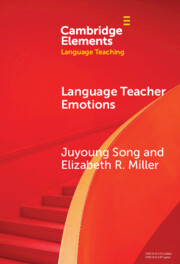Refine search
Actions for selected content:
301 results
Identity regulation: The fine line of balancing menopause awareness and stigma
-
- Journal:
- Journal of Management & Organization , First View
- Published online by Cambridge University Press:
- 03 November 2025, pp. 1-24
-
- Article
-
- You have access
- Open access
- HTML
- Export citation
Chapter 2 - The Embodied Letter
-
- Book:
- Letterworlds in Late Nineteenth-Century France
- Published online:
- 16 October 2025
- Print publication:
- 30 October 2025, pp 72-147
-
- Chapter
- Export citation
Can I get a little less life satisfaction, please?
-
- Journal:
- Economics & Philosophy , First View
- Published online by Cambridge University Press:
- 23 October 2025, pp. 1-22
-
- Article
-
- You have access
- Open access
- HTML
- Export citation
The role of psychological strengths in positive life outcomes in adults with ADHD
-
- Journal:
- Psychological Medicine / Volume 55 / 2025
- Published online by Cambridge University Press:
- 06 October 2025, e278
-
- Article
-
- You have access
- Open access
- HTML
- Export citation
Chapter 11 - Trauma-informed practice
- from Part III - Professional practice
-
-
- Book:
- Learning to Teach in a New Era
- Published online:
- 04 October 2025
- Print publication:
- 25 September 2025, pp 364-404
-
- Chapter
- Export citation
Chapter 4 - Teaching the arts: Am I doing it ‘properly’?
-
-
- Book:
- The Arts and Meaning-Making with Children
- Published online:
- 11 September 2025
- Print publication:
- 25 September 2025, pp 66-91
-
- Chapter
- Export citation

Language Teacher Emotions
-
- Published online:
- 17 September 2025
- Print publication:
- 09 October 2025
-
- Element
- Export citation
11 - Express Yourself
- from Part III - Applications of Rap
-
-
- Book:
- The Cambridge Companion to Global Rap
- Published online:
- 25 July 2025
- Print publication:
- 14 August 2025, pp 168-180
-
- Chapter
- Export citation
Development of a national food system mathematical model for exploring future scenarios and impacts
-
- Journal:
- Proceedings of the Nutrition Society / Volume 84 / Issue OCE2 / June 2025
- Published online by Cambridge University Press:
- 24 July 2025, E156
-
- Article
-
- You have access
- Export citation
He Rourou Whai Painga; A collaborative community-based research partnership testing the impact of a New Zealand Mediterranean dietary pattern on cardiometabolic health and wellbeing
-
- Journal:
- Proceedings of the Nutrition Society / Volume 84 / Issue OCE2 / June 2025
- Published online by Cambridge University Press:
- 24 July 2025, E153
-
- Article
-
- You have access
- Export citation
Chapter 1 - The Place of Meaning
- from Part I - The Beginnings of Meaning
-
- Book:
- The Development and Organization of Meaning
- Published online:
- 11 June 2025
- Print publication:
- 26 June 2025, pp 3-11
-
- Chapter
- Export citation
Chapter 44 - Be the Best!
- from Section 4 - Walking the Walk (and Talking the Talk)
-
- Book:
- Robinson and Hall's How to Survive in Anaesthesia
- Published online:
- 09 June 2025
- Print publication:
- 26 June 2025, pp 242-250
-
- Chapter
- Export citation
4 - Environments for learning
-
- Book:
- Intentional Practice with Infants and Toddlers
- Published online:
- 17 June 2025
- Print publication:
- 12 June 2025, pp 82-111
-
- Chapter
- Export citation
2 - Perspectives on quality
-
- Book:
- Intentional Practice with Infants and Toddlers
- Published online:
- 17 June 2025
- Print publication:
- 12 June 2025, pp 44-63
-
- Chapter
- Export citation
Chapter 14 - When do I stop learning?
- from Part 4 - Developing professional practice
-
-
- Book:
- Introduction to Education
- Published online:
- 14 June 2025
- Print publication:
- 02 June 2025, pp 369-391
-
- Chapter
- Export citation
Chapter 4 - Who are my students?
- from Part 1 - Introduction to education
-
-
- Book:
- Introduction to Education
- Published online:
- 14 June 2025
- Print publication:
- 02 June 2025, pp 81-106
-
- Chapter
- Export citation
Loneliness, Solitude, and Philosophic Contemplation
-
- Journal:
- Dialogue: Canadian Philosophical Review / Revue canadienne de philosophie , First View
- Published online by Cambridge University Press:
- 21 April 2025, pp. 1-17
-
- Article
-
- You have access
- Open access
- HTML
- Export citation
Large-scale evidence of a general disease (‘d’) factor accounting for both mental and physical health disorders in different age groups
-
- Journal:
- Psychological Medicine / Volume 55 / 2025
- Published online by Cambridge University Press:
- 11 March 2025, e78
-
- Article
-
- You have access
- Open access
- HTML
- Export citation
Committed leadership: a prerequisite for successful implementation of recovery during the workday
-
- Journal:
- Primary Health Care Research & Development / Volume 26 / 2025
- Published online by Cambridge University Press:
- 27 January 2025, e8
-
- Article
-
- You have access
- Open access
- HTML
- Export citation
Do we have too much choice?
-
- Journal:
- Economics & Philosophy / Volume 41 / Issue 3 / November 2025
- Published online by Cambridge University Press:
- 27 January 2025, pp. 484-511
-
- Article
-
- You have access
- Open access
- HTML
- Export citation
